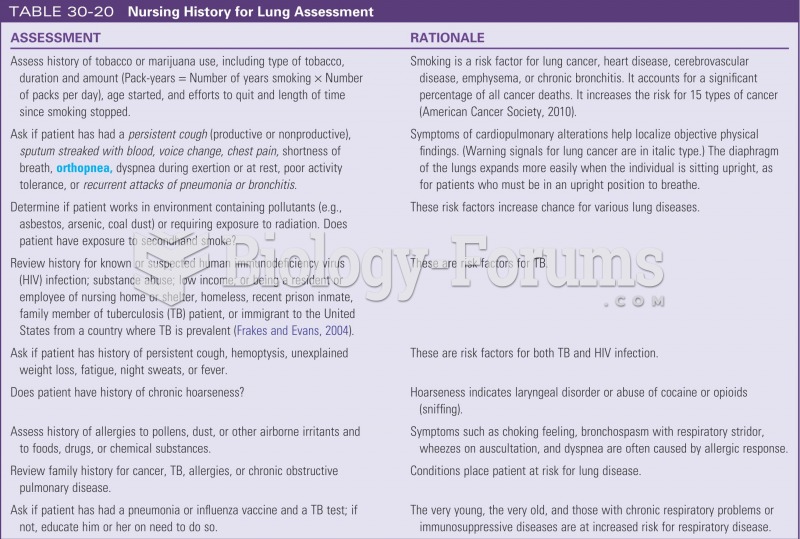Answer to Question 1
D
Feedback
A A macrobiotic diet does not include meats, only fish and plant proteins.
B Gerson therapy nutrition is used primarily in treatment of cancer. It is not a vegan or macrobiotic diet.
C Megavitamin therapy includes an increased intake of vitamin C and beta carotene.
D A macrobiotic diet is predominantly a vegetarian diet (white meat fish, occasional fruits, seeds, and nuts), believed to have anticancer properties. This diet consists of 40 to 60 whole-grain cereal, 20 to 30 vegetables, 5 to 10 beans.
Answer to Question 2
C
When caring for a client with a cancer diagnosis, the immediate educational focus should be the reinforcement of his or her health care professional's explanations of the risks related to the can-cer, as well as the benefits and risks related to the proposed treatment options. This should be followed by instructions on what the client needs to self-monitor (e.g., appetite, weight, the ef-fects of fatigue and sleeplessness), and what to discuss with health care professionals in the fu-ture. The potential for treatment effects such as pain, neuropathy, or cognitive change should also be addressed, since clients are more likely to report symptoms if they are educated on their likelihood. Survivors need to learn how to manage problems related to persistent symptoms. Be-cause survivors are at an increased risk for developing a second cancer, chronic illness, or both, it is important to educate them about lifestyle behaviours that will improve their quality of life.
While self-care measures to support health is an appropriate topic for client education, it should be addressed after the client is informed of the risks related to his or her cancer, as well as the benefits and risks related to the proposed treatment options.
Although the management of treatment-related side effects is an appropriate topic for client edu-cation, it should be addressed after the client is informed of the risks related to his or her cancer, as well as the benefits and risks related to the proposed treatment options.
While long-term lifestyle changes to minimize risk factors is an appropriate topic for client edu-cation, it should be addressed after the client is informed of the risks related to his or her cancer, as well as the benefits and risks related to the proposed treatment options.







